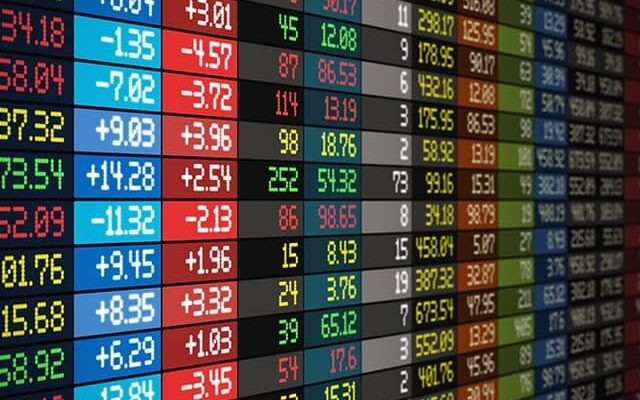(AOF) – Largest increase in the CAC 40, Sanofi gained 4.44% to 94.89 euros after announcing that Dupixent could become the first biological drug against chronic obstructive pulmonary disease (COPD). The pharmaceutical group points out that the latter is the third leading cause of death in the world and that no new treatment has been approved for more than ten years. Sanofi adds that it is the “first and only biological drug to demonstrate significant improvements in quality of life and respiratory symptoms”.
A phase III trial evaluating the experimental use of Dupixent (dupilumab) compared to placebo in adults on maximum standard inhaled therapy (triple therapy) and presenting with uncontrolled chronic obstructive pulmonary disease with type 2 inflammatory signature, met its endpoint. primary evaluation and all of its secondary evaluation criteria.
Dupixent resulted in a 30% decrease in moderate to severe acute exacerbations of COPD (rapid and acute deterioration of respiratory symptoms), as well as significant improvements in respiratory function, quality of life and respiratory symptoms due to COPD.
Smoking is one of the main risk factors for COPD, but even people who have quit smoking can still develop this disease.
The detailed efficacy and safety results of this trial will be presented at an upcoming scientific conference.
LEXICON
Clinical trials (Phases I, II, III)
Phase I: small-scale testing of the molecule on humans to assess its safety, tolerance, metabolic and pharmacological properties. Phase II: evaluation of tolerance and efficacy on several hundred patients to identify side effects. Phase III: assessment of the overall benefit/risk ratio with several thousand patients.
AOF – LEARN MORE
Key points
– 5th worldwide pharmaceutical group, created in 1994, 1st in Europe, and 1st worldwide in vaccines;
– Sales of €43 billion from 4 divisions: specialty medicine (immunology, neurology and oncology) for 41%, general medicine for 31.5%, vaccines for 16% and consumer health;
– Growing share of the United States in sales (43.6%) ahead of Europe (24.6%) and the rest of the world 31.8%;
– Business model in 4 points: a simplified organization, a restructured portfolio containing more organic products, a transformed R&D and strong ambitions in terms of profitability and financial solidity;
– Split capital (excluding L’Oréal: 9.48% of shares and 16.95% of voting rights), Serge Weinberg chairing the 16-member board of directors, Paul Hudson being CEO;
– Very solid balance sheet, €73.5 billion in equity, €6.4 billion in net debt and €8.5 billion in free cash flow.
Challenges
– 2025 “Play to win” plan aimed at creating an agile group and the world’s No. 2:
– 2023/25: reduction of 1/3 of product families, productivity driven by R&D and digital in factories and operating margin of 32%;
– Innovation strategy:
– 5 areas of research: immunology & inflammation, oncology, neurology (particularly sclerosis), rare hematological diseases & rare diseases, vaccines,
– 91 ongoing projects including 1/3 in phases 3 and 5 awaiting approval by the authorities,
– developed in collaboration – Kymera for immunology, Translate Bio in RNA for vaccines – or by acquisitions – Kiadis, Biopharma, Kymab for oncology,
– supported by technological platforms: small molecules, antibodies, proteins, hemogenetics, genomics;
– Planet Mobilization environmental strategy aiming for total carbon neutrality by 2045:
– 2027: elimination of plastic packaging for vaccines,
– 2025: eco-design of all new products;
– issues of lines of credit indexed to sustainable development;
– Impact of the 5 “priority” drugs: Amcenestrant (breast cancer), Fitusiran (RNA for hemophilia), Efanesoctocog (hemophilia), Nirsevimab and Nisevimab (respiratory viruses) and Tolebrutinib (multiple sclerosis):
– Commercial monitoring of drugs approved by the FDA (Dupixent) or recognized as innovative (Efanesoctocog alpha for haemophilia) and approved by the European Commission (Nexviadyme and Xenpozyme);
– After Origimm, specialized in research on skin conditions, Kadmon and Owkin, acquisition of Amunix in immuno-oncology (biological agents) and expansion of the collaboration with Innate Pharma (natural killer cells).
Challenges
– Resistance to competition from Aubagio generics, launched in the 1st half;
– Monitoring of regulatory authority approvals: Altuviliol and Beyfortus, launched in 2023, and Enjaymo;
– Positive phase 2/3 results for Acoziborole (sleeping sickness);
– After the 8% increase in 2022 results, expectations for 2023: €10 billion in sales for Duplixent and growth in earnings per share of less than 10%;
– 2022 dividend of €3.56.
Find out more about the “pharmacy” sector
Loss of speed in European research
European research is losing ground to American and Chinese research. In twenty years, Europe’s share has fallen from 41% to 31% in global R&D. China’s share jumped from 1% to 8%. As for the United States, which supplanted Europe, in 2001 it devoted only 2 billion euros per year more than Europe to R&D, whereas now this gap has reached 25 billion! Some experts accuse the European authorities of not having deployed effective policies. The financing of pharmaceutical research should therefore have been better targeted via the “Horizon 2020” programme. France only comes in eighteenth position in European funding despite the quality of its research. Conversely, the United States concentrates funding on Boston and a few centers of excellence.
